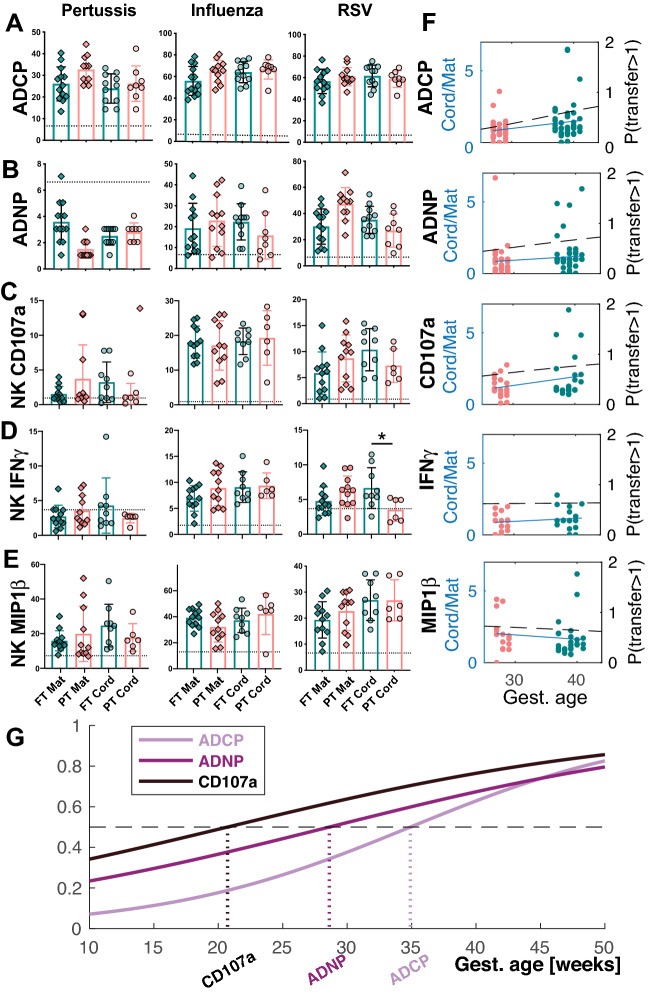Figure 6.
Functional antibodies transfer early in pregnancy. (A–E) The dot plots depict the univariate level of (A) ADCP, (B) ADNP, (C) antibody mediated NK cell degranulation (NK CD107a), (D) antibody driven NK cell IFNγ secretion, (E) antibody dependent NK cell chemokine MIP1β secretion across Pertussis-, Influenza-, and RSV-specific antigens. (F) The dot plots show the transfer ratios by gestational age, with each dot representing a different antigen and sample set organized by gestational groups (PT: pink and FT: green). Fewer antigens were included for the functional profiling due to sample limitations. Regression coefficients were estimated as 0.08, 0.10, 0.01, − 1.41, and 0.08 for ADCP, ADNP, NK MIP1β, IFNγ, and CD107a expression, respectively. Moreover, the likelihood of transfer ratios surpassing the likelihood of transfer ratio < 1 were calculated at gestational week 36, 41, 63, 36 and 24, respectively. (G) The individual probabilities for ADCP, ADNP, and NK CD107a were plotted and overlaid for comparison. The probability curves for NK IFNγ and MIP1β secretion were excluded since the fitted nominal multinomial logistic regression model was not reliably parameterized. The likelihood of transfer ratio ≥ 1 surpasses the likelihood of transfer ratio < 1 was marked on the graph with hatched lines.

